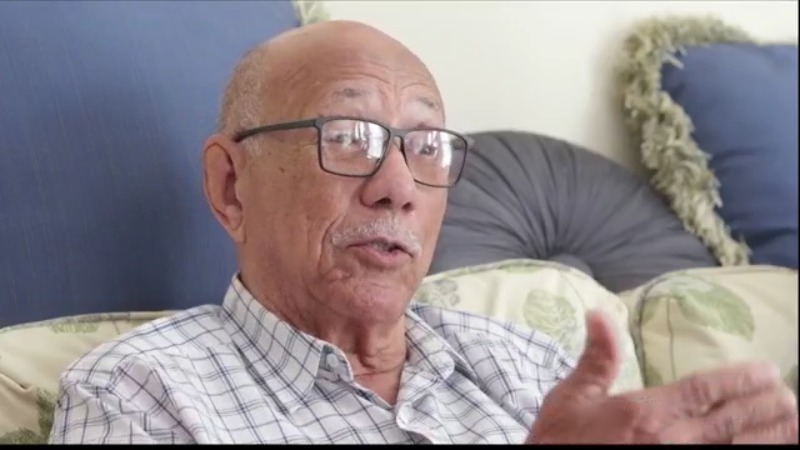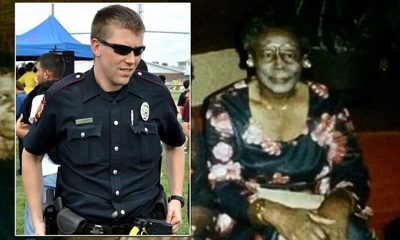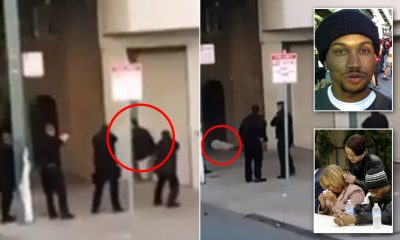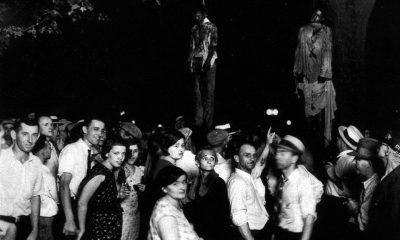Arkansas
In the segregated south, Savannah, Georgia’s first Black bus driver makes history


SAVANNAH, Ga. (WSAV) — The year was 1961—a then 28-year-old Roger Shank did something no Black man in the city or the state of Georgia had ever done. He moved to the front of the bus to take his seat behind the wheel for The Savannah Transit Authority—now CAT. This was a bold move in the segregated south.
“During that time, there were marches in the street EVERY night. People would go down to City Hall, said Mary Shank, Roger’s wife. “They would do that. They would be gassed or sprayed with water and I remember I was not working and I felt more free to demonstrate along with his sister who was jailed for three weeks. We couldn’t get her out of jail because nobody could stand the bond. It was so high.”
“But Roger didn’t participate because he knew better.” Three years prior, he’d married the love of his life, Mary, and they were expecting their first and only child. He needed to make money to support his growing family. “It wasn’t pleasant,” said Roger Shank.
“As you know they had ‘colored’ assignments for all of these facilities. And once I got into the facilities training only bus drivers, I wasn’t allowed in the operator’s room. I had to wait in the maintenance department before we would move on to select a bus.”
And though racism reared its ugly head more often than not, Shank persevered. Mary said, “He would go over to the bus company. Cut the grass. Wash the buses. Change the tires. He was not allowed to use the facilities in the main building. He had to use the one where the maintenance folk were. And he did that for a good—I know at least 2 months. And then he came home one day and said he was going to get a uniform.”
The move attracted eyes across the country. His picture was published in the Pittsburgh Carrier on Shank’s first day. His initial route was the Liberty Parkway line-—a then newly developed black neighborhood.
“And they would put him on the bus that ran from Victory Drive to Mills B. Lane into Liberty City, said Mrs. Shank. “Back down Mills B. Lane to Hopkins Street to Victory Drive and West Broad Street where he would stop and the passengers could connect to one of four buses that would go downtown.”
Other routes would follow—but not everyone was on board. “The white operators at that time they didn’t accept it. They would get sick reports. Right in that room. They reported to work and got sick. They had some things to say but I just kept quiet and did what I was supposed to do,” Mr. Shank said.
He didn’t have the same liberties as his colleagues and he was even confronted by an angry passenger. “I had one case on the Number 11 Abercorn where one passenger approached and said you uh– you got a white man’s job. And I didn’t answer him. So, he cussed and I pulled over at the Georgia Infirmary and told him, sir, you can’t curse on the bus please,” Mr. Shank said. “I don’t care what you call me but just don’t—the ladies. And he kept going so I said you have to get off the bus. Then he reported me. And after reporting me, the supervisor came with another driver and they carried me and they interviewed me. And it happened so Mrs. White, a registered nurse was down on Habersham Street and they called in and explained what happened so they brought me back with apologies to the bus to continue my day.”
But he was determined to make it work. Soft-spoken by nature, his actions proved louder than words.
With support from his family and the Black community, Shank worked his way up the ladder. It also helped that he had civil rights leader W.W. Law on his side. “He would ride with me occasionally– from one end to the next to see how I was functioning. ‘Any problems?’ I would say, ‘no sir,’” said Shank.
He also became a member of the NAACP and encouraged others to do the same. Mrs. Shank said, “At one point, Roger joined the NAACP and it was not recommended that you be affiliated with this organization. It was like a subtle thing. So following the advice of Dr. Abby Jordan, he solicited all of the bus drivers to join the NAACP and it got back to the administrator. And the NAACP gave him a plaque for bringing in the most numbers for that year. [chuckles] You came close to losing your job.”
Eventually, Shank was promoted to night relief supervisor and day and night shift dispatcher. Before long, he was training other Black bus operators and later the first woman to do the same. Ultimately attaining the title of assistant superintendent. In 1991, he became the first African American director of transportation.
“Going through the ranks, it was just muscle for me. I didn’t have any training in some of it. And it was to do a better job than the guys who were in front of me in those ranks as I came up,” said Mr. Shank.
Shank retired from the transit system in 1992 after 30 years with little to no recognition of his pioneering accomplishments. Now at 90, he and his wife continue to enjoy retirement together.
So, the next time a CAT bus passes by, think of Roger Shank and thank him for the road he traveled to pave the way.
Mr. Shank said, “I’ve been through it all but I enjoyed it. I don’t have any gripes. I had a good career. And I’m happy for the rest who have come behind me.”
Although he’s had an impressive career, Mr. Shank isn’t the only history-maker in his family. His wife, Mary, was one of the first administrators to desegregate the Savannah-Chatham County Public School System.
Their daughter Suzanne is one of the most powerful women on Wall Street and is the CEO of the largest woman and minority-owned investment firm in the country.

-

 States5 days ago
States5 days agoPearlie Golden 93-Year-Old Black Woman Shot By Texas Cop
-

 States5 days ago
States5 days agoLayers Of Racial Tension The Mario Woods Tragedy And San Francisco Path To Justice
-

 States5 days ago
States5 days agoThe Killing Of Terence Crutcher And The Fight For Racial Justice
-

 States5 days ago
States5 days agoLynching Of Thomas Shipp Tragedy Of Racism Echoes Through History
-

 States5 days ago
States5 days agoTragedy Unveils Racial Tensions Tarika Wilson Story

















You must be logged in to post a comment Login